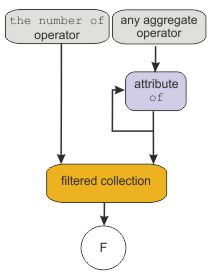Business model statements syntax
You use the business statements to add behavior to your business model entity and event types.
You define the behavior of your entity and event types by building statements in the Statements editor of the business model file.
| Construct | Description | Example |
|---|---|---|
<an entity> is initialized from <an event>, where <source> comes from <target>[: - <action>]. |
Defines the initialization of an entity from an event. The source is the identifier of the bound entity and the target is the identifier of the event. The action part of the rule defines attributes for the entity. |
|
<an entity> is enriched by <the data provider>, given <the attribute> from <the attribute of the bound entity>, setting <the attribute> to <the attribute> of <the data provider>. |
Defines the enrichment of an attribute from external data. The attribute that is set to the attribute of the data provider is enriched. |
|
<the attribute> of <an entity type> is <another attribute> of <an entity> <arithmetic operation>. |
Defines the derivation of the value of an attribute. This value is calculated from the value of another attribute. |
|
<attribute> of <entity type> is aggregated from <event type> where <source> comes from <target> as <aggregate expression> [ defaulting to <number|null> [ if there are less than <number> events ]] available for <time duration> [ with a resolution of <time duration> ]. |
Computes the value of an attribute from the aggregation of values from a collection of events that is related to an entity. The following diagram shows the structure of the aggregate
expression construct: |
|
